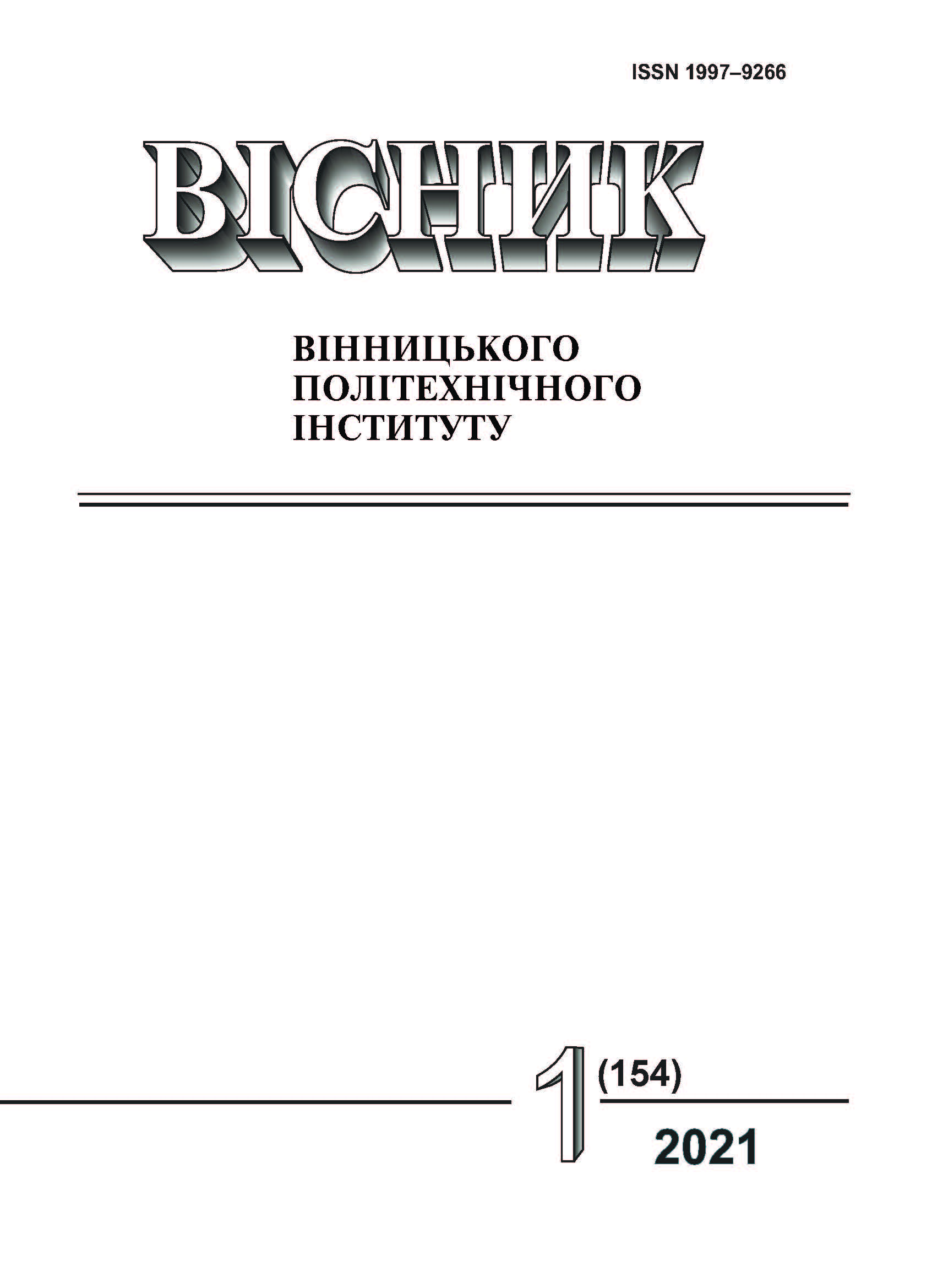Analysis of Composition of Waste Electrical and Electronic Equipment Components
DOI:
https://doi.org/10.31649/1997-9266-2021-154-1-42-48Keywords:
electronic waste, electrical waste, equipment, electronic devices, toxic substances, anthropogenic impact, environmental pollutionAbstract
Waste electronic and electrical equipment is the most valuable category of waste that needs detailed study. These wastes have a diverse composition of components that should be reused and it is important to dispose of properly. The article investigates and analyzes the quantitative and qualitative composition of components of different types of electronic and electrical waste. In particular, statistical data on the mass and concentration of major components, valuable resources, toxic substances were evaluated. The types of electronic and electrical equipment that are most common in waste and widely used by people in everyday life are considered. Household waste contains only 2 % of electronic components, but they contain 70 % of hazardous substances. These include: lead, cadmium, mercury, chromium, chlorine, bromine, heavy metals, brominated flame retardants, phthalates, polychlorinated biphenyls, polycyclic aromatic hydrocarbons, benzene, toluene, ethylbenzene, xylene, liquid crystals, toner powder, and electrolytes. Among the valuable components: gold, silver, palladium, platinum, zinc, aluminum and others. General estimates of the content of valuable resources in waste electronic and electrical equipment show that almost the entire mass of precious metals is in printed circuit boards. For example, printed circuit boards for small electronic devices can contain from 120 to 280 g/t of gold. Refrigerators and freezers are very valuable, because 80 % can be recycled and reused. This equipment includes many valuable materials: copper, iron, aluminum, glass, PVC, mercury, etc.; even a dangerous component — Freon — is pumped out for further use. A detailed analysis of the component composition of waste electronic and electrical equipment makes it possible to more effectively manage the flow of this waste. By disassembling and sorting electronic equipment that is obsolete or broken, you can replenish a significant portion of the raw material base for the re-production of various devices. This will help reduce the extraction of raw materials and reduce the anthropogenic impact on the environment.
References
S. Salhofer, and M. Tesar, “Assessment of removal of components containing hazardous substances from small WEEE in Austria,” Journal of hazardous materials, 186 (2-3), 1481-1488, 2011.
Yu. Shulaeva, “Instrumentarii mekhanizmov effektivnogo upravleniia elektronnymi otkhodami,” Zbirnyk naukovykh prats "Problemy i perspektyvy rozvytku bankivskoi systemy Ukrainy". Sumy, Ukraina: vyd-vo Derzhavnoho vyshchoho navchalnoho zakladu «Ukrainska akademiia bankivskoi spravy Natsionalnoho banku Ukrainy», no. 25, pp. 282-293, 2009.
L. Hlavatska, and V. Ishchenko, “Povodzhennia z vidkhodamy elektronnoho ta elektrychnoho obladnannia u Vinnytskii oblasti,” Zbirnyk materialiv 5 Mizhnarodnoho konhresu «Zakhyst navkolyshnoho seredovyshcha. Enerhooshchadnist. Zbalansovane pryrodokorystuvannia», Lviv, September 26-29, p. 74, 2018.
E. Dimitrakakis, A. Janz, B. Bilitewski, and E. Gidarakos, “Determination of heavy metals and halogens in plastics from electric and electronic waste,” Waste Management, no. 29 (10), pp. 2700-2706, 2009.
A. Cesaro, A. Marra, K. Kuchta, V. Belgıorno, and E. D. Van Hullebusch, “WEEE management in a circular economy perspective,” An overview. Glob. NEST J, 20, 743-750, 2018.
H. Duan, J. Hu, Q. Tan, L. Liu, Y. Wang, and J. Li, “Systematic characterization of generation and management of e-waste in China,” Environmental Science and Pollution Research, no. 23(2), pp. 1929-1943, 2016.
S. Diedler, J. Hobohm, B. Batinic, M. Kalverkamp, and K. Kuchta, “WEEE data management in Germany and Serbia,” Glob. NEST J, no. 20, pp. 751-757, 2018.
P. Chancerel, C. E. Meskers, C. Hagelüken, and V. S. Rotter, “Assessment of precious metal flows during preprocessing of waste electrical and electronic equipment,” Journal of Industrial Ecology, no. 13(5), pp.791-810, 2009.
L. S. Morf, J. Tremp, R. Gloor, F. Schuppisser, M. Stengele, and R. Taverna, “Metals, non-metals and PCB in electrical and electronic waste–Actual levels in Switzerland,” Waste Management, no. 27(10), pp. 1306-1316, 2007.
T. Ernst, R. Popp, and R. van Eldik, “Quantification of heavy metals for the recycling of waste plastics from electrotechnical applications,” Talanta, no. 53 (2), pp. 347-357, 2000.
H. S. Hong, and A. R. Choi, “Quantitative characterization of recyclable resources dismantled from waste liquid crystal display products,” Journal of Material Cycles and Waste Management, no. 20(4), pp. 2054-2061, 2018.
M. Oguchi, H. Sakanakura, and A. Terazono, “Toxic metals in WEEE: Characterization and substance flow analysis in waste treatment processes,” Science of the total environment, 463, pp. 1124-1132, 2013.
S. E. Musson, K. N. Vann, Y. C. Jang, S. Mutha, A. Jordan, B. Pearson, and T. G. Townsend, “RCRA toxicity characterization of discarded electronic devices,” Environmental science & technology, no. 40(8), pp. 2721-2726, 2006.
P. Chancerel, and S. Rotter, “Recycling-oriented characterization of small waste electrical and electronic equipment,” Waste management, no. 29(8), pp. 2336-2352, 2009.
V. Ishchenko, V. Pohrebennyk, A. Kochanek, and L. Hlavatska, “Waste electrical and electronic equipment management in Ukraine,” Proceedings of International Conference on Geosciences, March 26-29, 2019, Athens, Greece, book 3, vol. 1, pp. 197-204.
Downloads
-
PDF (Українська)
Downloads: 1523
Published
How to Cite
Issue
Section
License

This work is licensed under a Creative Commons Attribution 4.0 International License.
Authors who publish with this journal agree to the following terms:
- Authors retain copyright and grant the journal right of first publication.
- Authors are able to enter into separate, additional contractual arrangements for the non-exclusive distribution of the journal's published version of the work (e.g., post it to an institutional repository or publish it in a book), with an acknowledgment of its initial publication in this journal.
- Authors are permitted and encouraged to post their work online (e.g., in institutional repositories or on their website) prior to and during the submission process, as it can lead to productive exchanges, as well as earlier and greater citation of published work (See The Effect of Open Access).





